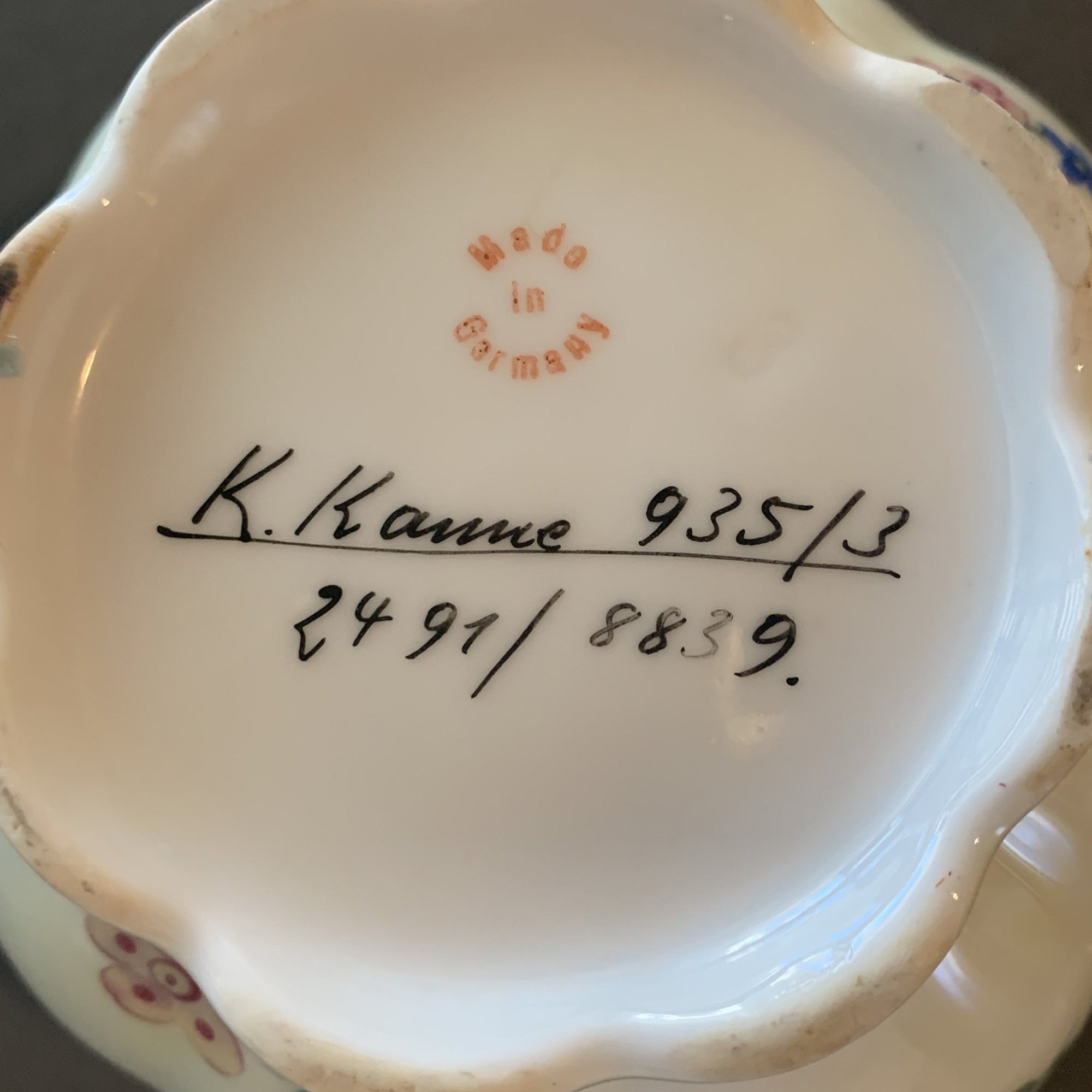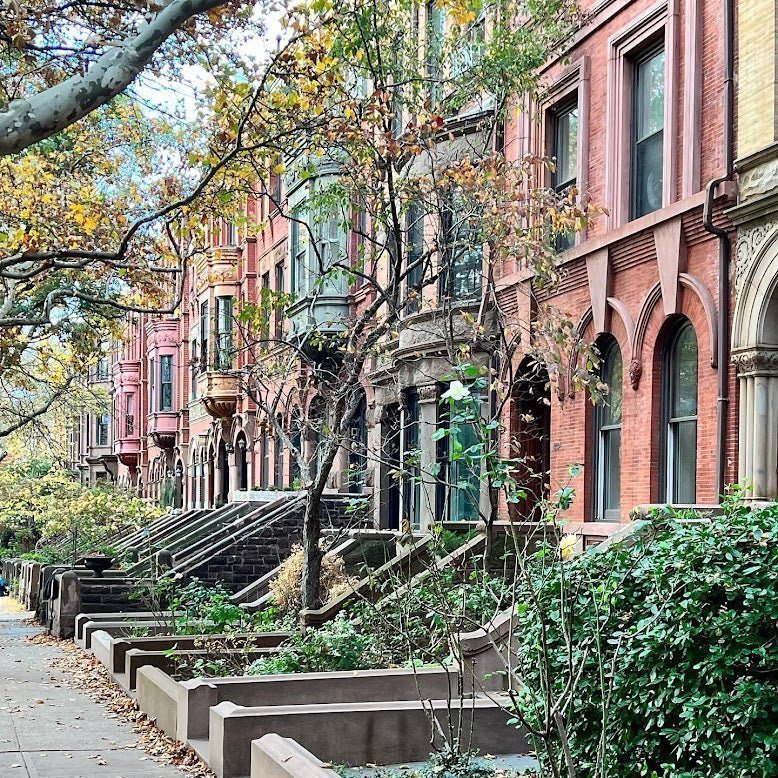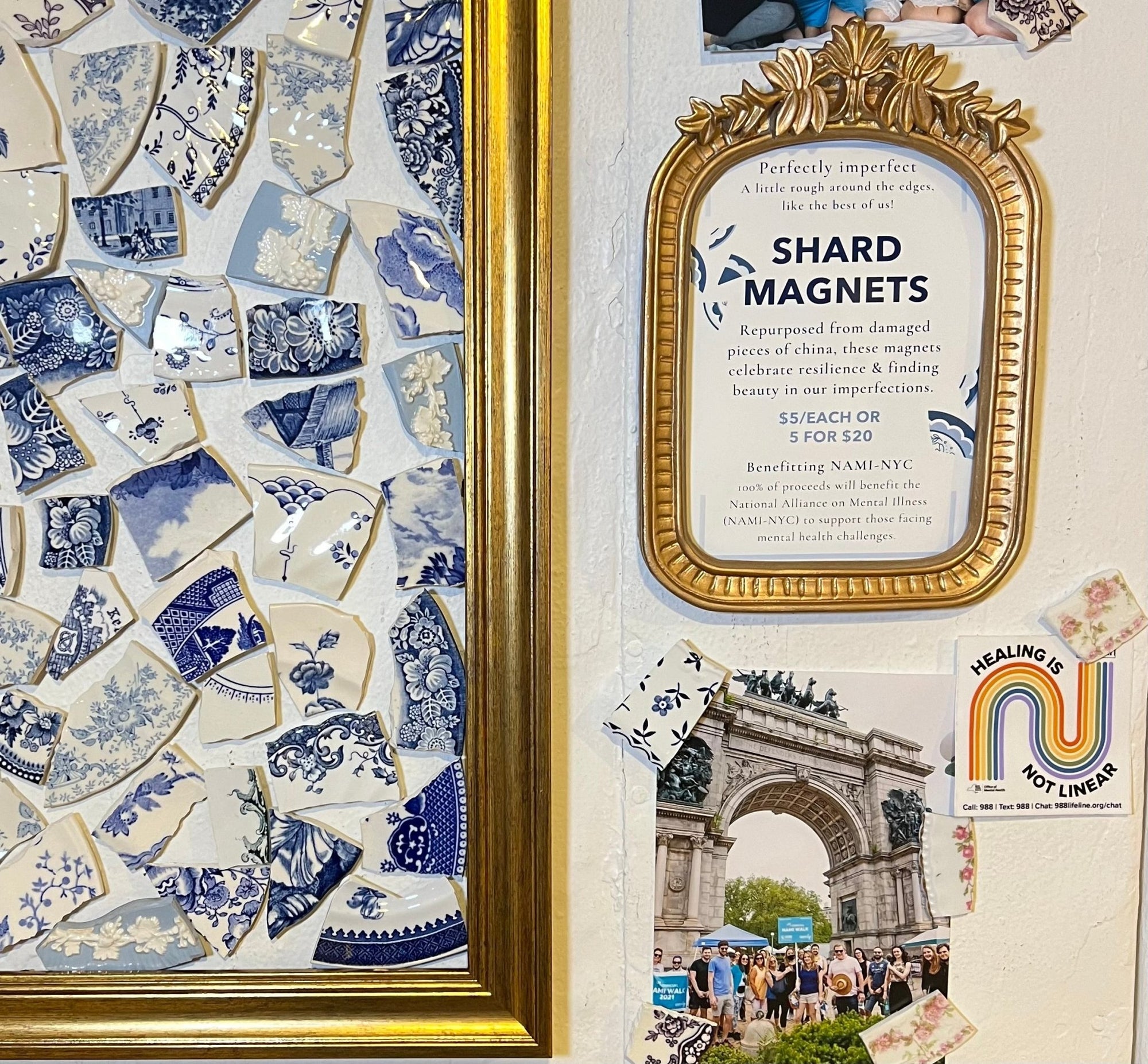Uncovering the stories and value behind your vintage or antique china can be an exciting journey or a pain in the butt, depending on your level of patience. By understanding how to read the clues and patterns within the pieces, you can often gather all the information you'll need to identify the pattern. If you have the time and interest, you can also gain a deeper appreciation and understanding of the china pattern, history and value.
There are a few easy steps to kick off your pattern identification search:

- Look for the manufacturer: The place to start to identify your pattern is by looking for a backstamp or hallmark on the bottom of the piece. This will often include the manufacturer's name and the pattern name. Additionally, many manufacturers print a code or number on the bottom to indicate the pattern number. If you have dinner or salad plates, look there first, as they're the most likely to be marked.

- Think your pattern is somewhat popular or well-known? One simple thing you can try is a Google Image Search. Type in defining pattern attributes, like colors, textures, design/motifs, gilding, etc. and any other characteristics you observe.

Even if you can't find your exact pattern. You can usually narrow down the number of possible options by comparing your pattern to the images you find.
When you know the manufacturer's name:
Once you've found the manufacturer's name, you have a few options.
If the manufacturer indicated on your backstamp is still in business, you can try visiting their website or contacting them directly. The following brands have extensive catalogues of antique and discontinued pieces:
- Meissen China Patterns (meissen.com) for Meissen china patterns.
- The National Shelley China Club (shelleychinaclub.com) for Shelley china patterns and their dates.
- The Spode Collection (spodemuseumtrust.org) for Spode patterns with photos and a paid identification service.
- Robbin's Nest Noritake Directory (robbinsnest.com) for Noritake patterns and photos.
- Haviland Online (havilandonline.com) for Haviland china patterns and identification tips.
You can further narrow down your options using Replacements.com, an e-commerce store which maintains an extensive library of photos and sells replacement pieces for thousands of patterns. If you can’t find your pattern through their search, you can submit a pattern identification request with pictures of your china and have their experts try to identify it for you.
The service is free and, according to a request I just submitted, will send you an email within 7 days with their findings.


How to identify unmarked china/ if there’s no backstamp:
If a piece of china is unmarked, it can be more difficult to identify the pattern or manufacturer. However, there are still a few ways to try to determine its origins:
- Look for any identifying characteristics, such as unique shapes, designs, or colors, that may match known patterns or manufacturers. Note the type of clay used (e.g., bone china, hard porcelain, soft porcelain, etc.) and the method of production (e.g., transferware), which could also provide some clue about the manufacturer or period of production.
- Research similar pieces from various manufacturers and compare them to your unmarked piece.
- Check for any other markings or inscriptions on the piece, such as a pattern number or company logo, that may provide clues to its origins.
Ultimately, you may need to seek out the help of an expert. Again, replacements.com is your best starting point. Antique dealers and auction houses will likely charge a fee for their services, especially if you don’t try to sell your china with them.
Whether you're looking to identify a common pattern or a rare, antique treasure, gaining an understanding of the details of your china can enhance your appreciation for its historical significance. It can even help connect you to the original owner, like a grandparent or loved one from your past or present.
What to do with your vintage china set?
Now that you've identified the pattern, what will you do with your china set? If you’re not planning to use it, consider transforming your set into unique serving pieces and gifts. This way, you can appreciate the pattern and any memories you may have associated with it, while keeping just a few pieces to share and enjoy. It also means you can part ways with the rest without guilt or regret. Learn more about The Brooklyn Teacup’s China Upcycle Service here.
There are also plenty of ways to creatively reuse and repurpose your pretty porcelain pieces outside of the kitchen or dining room. For example, design a plate wall or use your teacups and shallow soup bowls inside your drawers to keep clutter organized and oh so charming.
If you're thinking about selling your fine china set, I encourage you to read our post with tips and considerations to help you set clear expectations. There you can also read about worthy organizations where you can donate your china.




Comments
Looking to identify my mother’s China tea set has no markings and only cups and saucers.
Hello was given my grandmother’s tea set ,it’s Czechoslovakia ,can’t find any dates,I have teapot,four saucers ,three cups ,one of which is chipped
Thank you
I have a 96 piece set of Sango China made in Japan and I’d love to know how old it is. The pattern is Moonspun and it is number 6268. Thank you!!
Bonjour, j ai un service a café en porcelaine bavaria ,motif fragonard, doré à l or fin. Sous les pièces qui sont numérotés, il y a un écusson de winterling .j aimerais savoir si ça vaut quelque chose. Merci
This complete set of 16 piece fine porcalein made in either Japan or China brought back in 1950s by my Naval officer grandfather( it was not made in UK Denmark etc.) Fine porcelain white with Silver & gold rims & bamboo print I can not find the mark that’s imprint in reddish color on back-Does anyone know this imprint or how to find it? its a vertical rectangle w/small marking inside it approx 1/8 to 1/4 max
I have a 36 piece set excellent condition marked coronet fine china
Japan
How do I find age and value I have 30 odd years and my mother before
Any help would be appreciated
Hi Xavier! Thanks for checking out our blog! We do not offer the service you are looking for as we are not pattern experts – however, you may check with replacements.com who might be able to offer more information about the china you may have.
China from around 1901. Flat round cups. Couple lived in wisvonsin
Hello! I need some help trying to identify the type of China set I have, at least I think it’d a China set? I can’t find marking online or anything, I’m willing to send pictures through email if possible! Any help would be greatly appreciated! Have a great day :)